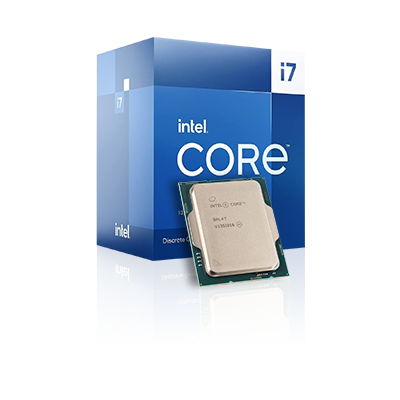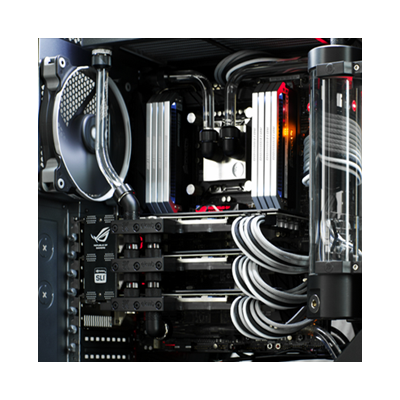INTEL i7-14700KF, 5.6GHz, 20 Cores, 28 Threads + HARDTUBE LC

INTEL Core i7-14700KF
INTEL Core i7-14700KF, clock
frequency @ 5.6GHz, cores 20 (8+12), threads 28, turbo clock 5.60GHz (Turbo
Boost Max 3.0), 5.50GHz (P-Core), 4.30GHz (E-Core), base clock 3.40 GHz
(P-Core), 2.50GHz (E-Core), Socket Intel 1700 (LGA1700), "Socket V",
codename Raptor Lake-S, Architecture Raptor Cove (P-Core), Gracemont (E-Core),
L2 -Cache 24MB (8x 2MB + 8x 1MB), L3 cache 30MB, memory controller Dual Channel
DDR5-5600 (PC5-44800), DDR4-3200 (PC4-25600), 89.6GB/s, max. 128GB, ECC
support yes, SMT yes (Intel Hyper-Threading), remote maintenance yes (Intel
vPro), free multiplier yes, CPU functions AES-NI, AVX, AVX2, Boot Guard, CET,
DL Boost, EIST, GNA 3.0, ISM, Idle States, Instruction Set 64bit (Intel 64),
MBEC, OS Guard, SSE4.1, SSE4.2, Secure Key, Speed Shift, Thermal Monitoring,
Thread Director, VMD, VT-d, VT-x, VT-x EPT, XD Bit, PCIe lanes 16x PCIe 5.0, 4x
PCIe 4.0, chipset interface DMI 4.0, 16GT/s (PCIe 4.0 x8).

Liquid cooling system
consisting of: • Processor cooler • Graphics card cooler • Radiator • 12V pump(s)
• Coolant • Hard tube piping • Expansion tank • Accessories (connections, fans, etc.)
Water cooling in a PC is a powerful active technology for dissipating power loss that has been converted into heat.
In
computers, electrical energy taken from the power grid is converted
into heat. As the power density of modern computers increases, the
heating of the individual components also increases. While in earlier
computers the surrounding air was sufficient to dissipate the low
specific power loss in relation to the surface solely through radiation
and natural convection without any additional heat sinks, today
passively cooled PCs usually only use heat sinks; Supporting heat sinks
are used for actively cooled by fans.
The aim of water cooling in a
PC is to dissipate the heat generated in the PC as efficiently and
quietly as possible, especially from the semiconductors that heat up
during operation, such as the main or graphics processor. A possible
increase in the performance of the computer by operating it above the
officially permitted specifications (overclocking) is also an area of
application for water cooling.
The comparatively high heat capacity
of the cooling medium water favors the heat absorption of small-area
heat sources, such as those typical in a computer.
In addition to
improved heat dissipation, water cooling often enables significantly
quieter operation compared to other cooling concepts.
The heat flow
between the semiconductor and the surface effective for heat transfer is
ultimately limited by the finite thermal conductivity of the internal,
intermediate materials. As a sum, these materials represent a fixed and
unchangeable thermal resistance.

 Deutsch
Deutsch
 English
English